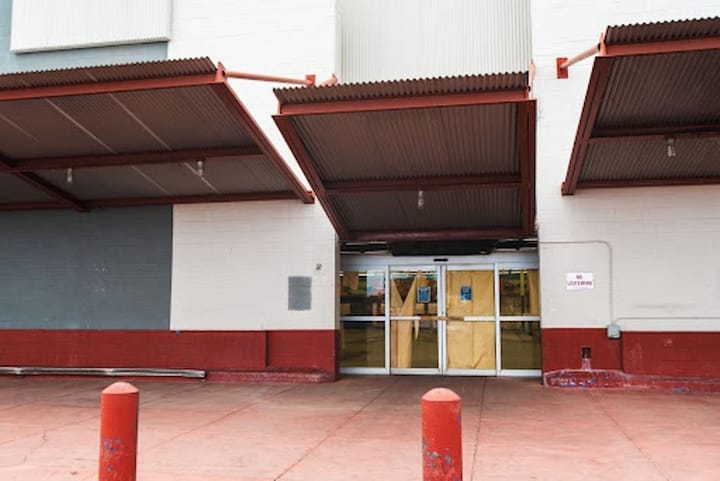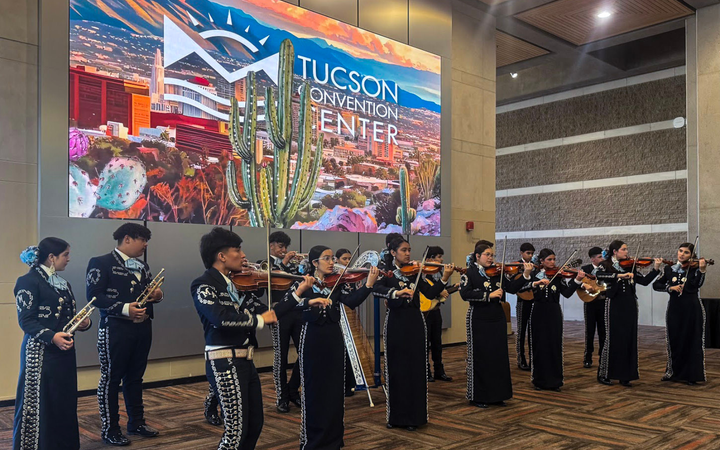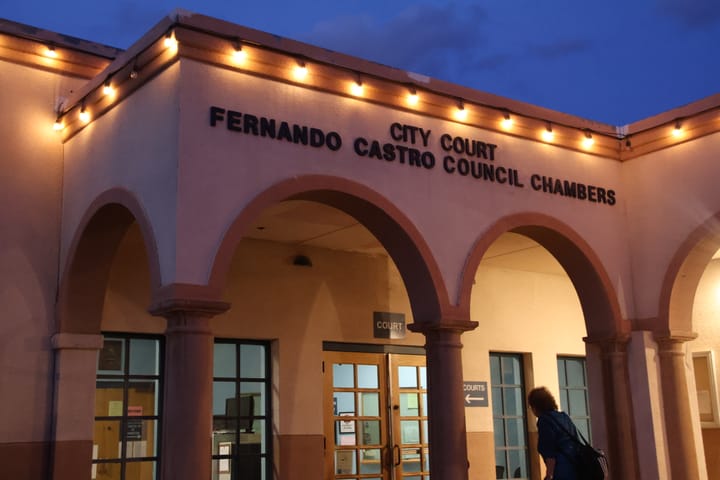Tucson groups continue to push back on Project Blue
At a late-September town hall, Tucson activists raised concerns over Project Blue’s water and energy use and pushed for public power.
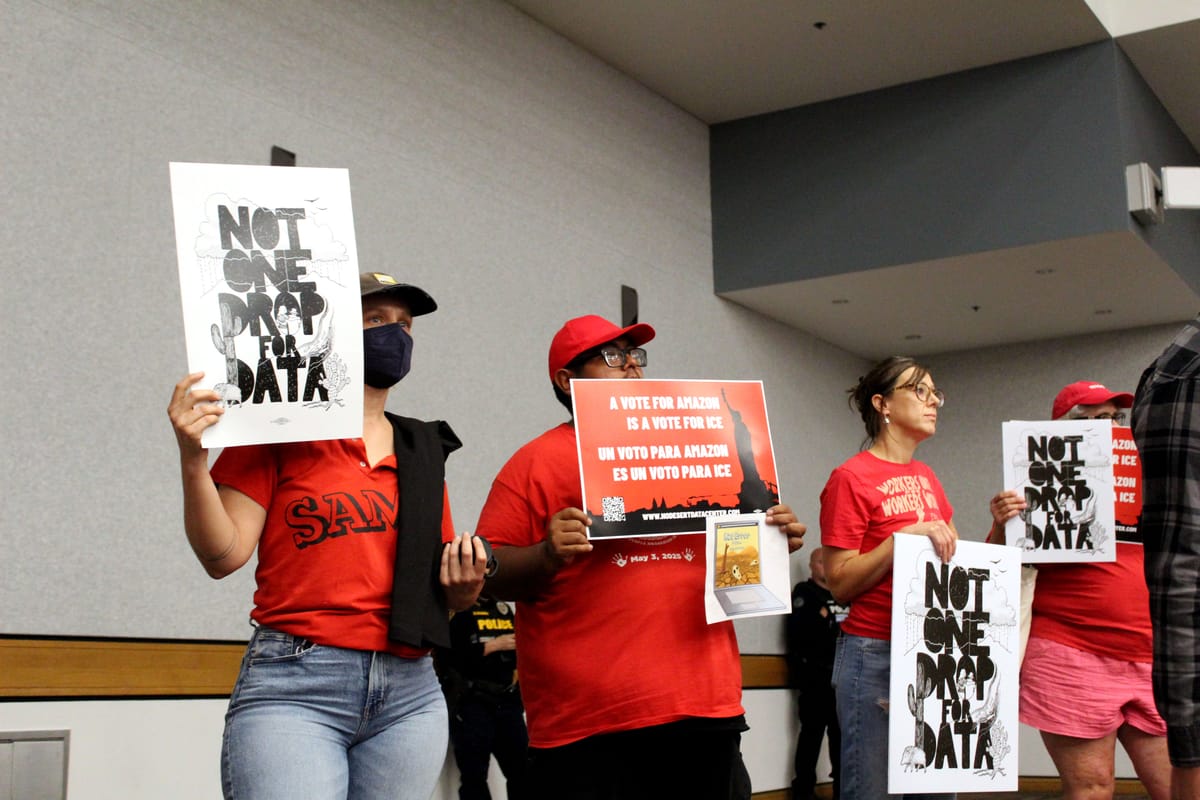
As new plans for Amazon’s Project Blue data center take shape, local organizers warn the development could significantly increase Tucson’s water and energy use, even though a site has not yet been finalized.
Earlier this year, Pima County approved the sale of land for Project Blue, but Tucson city leaders later blocked the project following public opposition. After Tucson blocked the project, developer Beale Infrastructure announced plans to move forward in unincorporated Pima County and made changes to reduce water use.
Despite these changes, local activists remain concerned about the potential environmental and community impacts of Project Blue. Members of the No Desert Data Center Coalition and the Tucson chapter of the Democratic Socialists of America raised concerns during a late-September town hall at the Historic YMCA, calling for publicly owned power and greater transparency around the project’s environmental impact.
Tucson Electric Power is owned by a Canadian company called Fortis, which owns multiple electric companies across the United States. It operates on a business model of vertical integration, meaning TEP owns multiple stages of the production process, including generation, transmission and distribution of power.
“They’re trying to align themselves with Beale and Amazon’s Project Blue and they help them greenwash it and try to show it down our throats,” Democratic Socialist of America member Lee Ziesche said during the town hall.
While TEP breaks even on the cost of electricity, the company makes its profit through energy infrastructure, Ziesche said.
“They make a capital investment, then they get money back through our bills plus a big rate of return,” she said. “Any investment they make, they know they’re almost getting 10% back in every single penny that comes through our electric bills.”
Essentially, TEP acts as a landlord for the city’s electricity, Ziesche said.
DSA has been organizing and rallying for publicly owned power since 2023, as part of Tucson's climate response plan, Ziesche said. A public power system would allow the city to buy out TEP and operate its own electricity distribution.
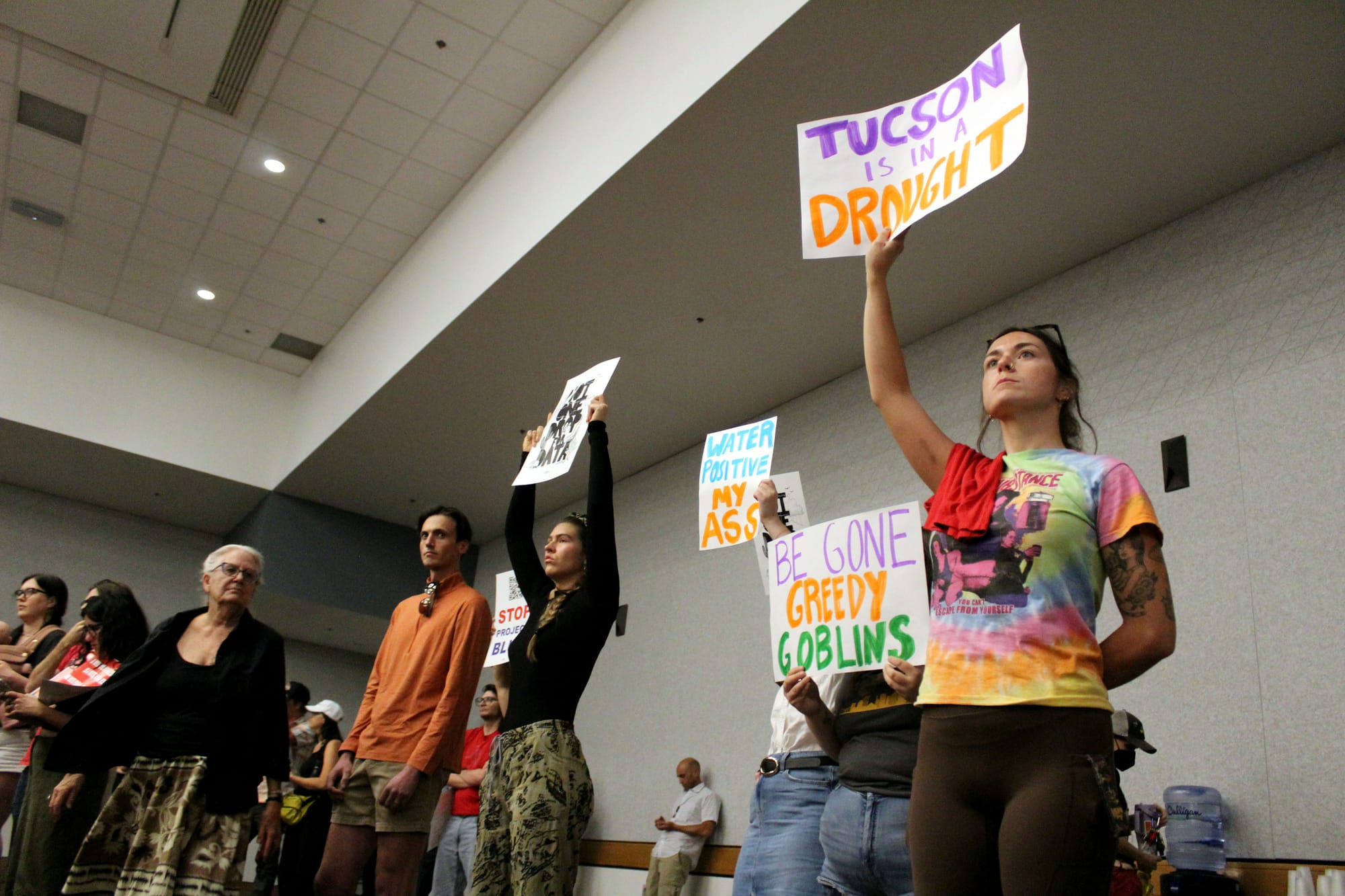
In 2023, the city planned to study the feasibility of replacing TEP with a publicly owned utility, but the city council said the study would cost too much money, Ziesche said.
“We launched a petition in the fall of 2023, right after TEP approved another rate hike,” she said. “We’ve been out talking to people, getting them to sign our petition to the mayor and council to take the feasibility study seriously.”
DSA has been meeting every Tuesday since then and held their first big rally for public power in 2024. This past May, the city completed the feasibility study.
“It found out that even with a very high buyout, within the first five years, (households) would save over $200 a year,” Ziesche said.
Within 16 to 20 years, Tucson residents would save up to $1,000 a year with a publicly owned utility.
“Those are really great feasibility results,” she said. “Not every city gets that, but it showed that it was legally possible and it financially makes sense.”
Ziesche said the study concluded that the only way to achieve public power is through political leadership.
“We’ve seen rate hike after rate hike, but there’s no way TEP can come to any of us anymore and honestly say that they’re some kind of community partner who cares about the people of Tucson,” she said.
Joe Barrios, TEP's manager of corporate communications, said its proposed energy service agreement, filed with the Arizona Corporation Commission, is designed to protect customers and that the project will pay standard rates with no special discounts.
He said TEP can provide the needed 286 megawatts from existing and planned clean energy resources, and the switch to air cooling means water use is not expected to rise.
Barrios cautioned that studies on a municipal-owned utility often underestimate the cost, time, and potential reliability risks of such a move.
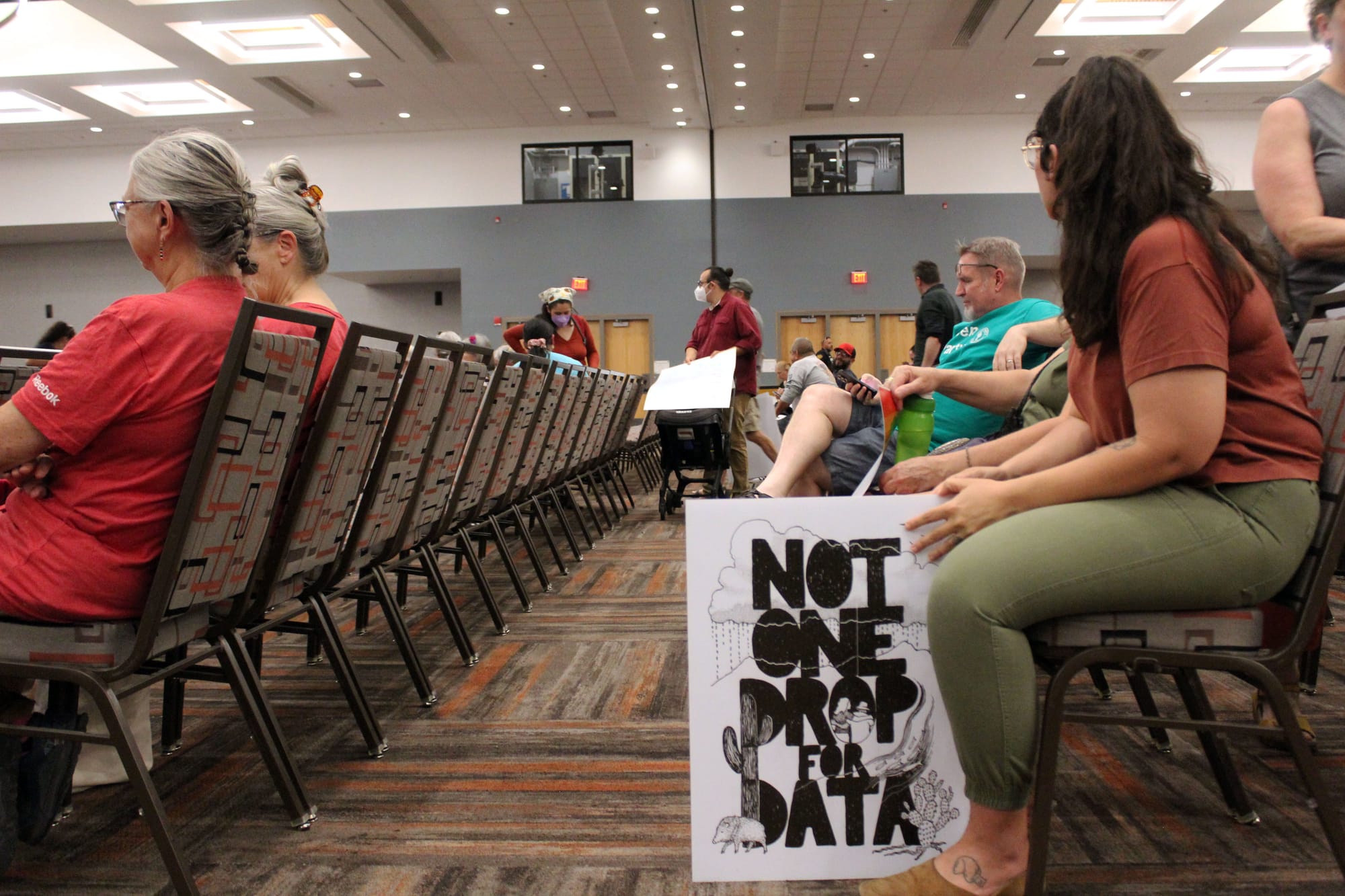
The increase in power generation isn’t the only concern for Project Blue. Higher energy use also means greater water consumption.
Eliseo Gomez, a member of the No Desert Data Center Coalition, said the data center’s energy use would be equivalent to that of an entire additional City of Tucson. The coalition reached out to energy analyst Russell Lowes to calculate the energy and water usage of both Project Blue plans. He found that the water used to cool data servers and generate power equals about 10% of Tucson water delivery, Gomez said.
“It would add to water usage. Energy was a big sticking point,” he said. “One thing that we learned from other data centers around the country is that we usually pay for those electric bills.”
Gomez said Lowes calculated that for the first plan proposed by Project Blue, the data center could use 2.1 to 3.6 billion gallons of water per year, while the new proposed plan could use up to 6 billion gallons per year.
“The main thing we’re concerned about, they doubled because there’s so much more water usage that goes into generating energy,” he said.
The updated plans for the data center include a closed-loop air-cooling system that Beale Infrastructure said would reduce on-site water use, but overall energy use would still increase.
“The thing with these computers is that if they get too hot, they’re inefficient,” Gomez said.
Gomez and Ziesche said their groups will continue to organize events, with DSA still meeting every Tuesday and posting additional information to its Discord page. They said Pima County residents can also attend Pima County Board of Supervisors meetings to voice concerns or send comments regarding TEP and Project Blue to the Arizona Corporation Commission.
After stopping Project Blue this summer, the coalition said they are confident they will succeed again.
“We will again. I truly believe that,” he said. “We will always be ‘Not one drop for data.’”
*Editor’s note: Information about TEP’s response to concerns about the project was added after initial publication.*
Arilynn Hyatt is a journalism major at the University of Arizona and Tucson Spotlight intern. Contact her at arilynndhyatt@arizona.edu.
Tucson Spotlight is a community-based newsroom that provides paid opportunities for students and rising journalists in Southern Arizona. Please consider supporting our work with a tax-deductible donation.

